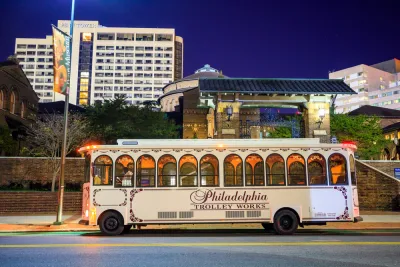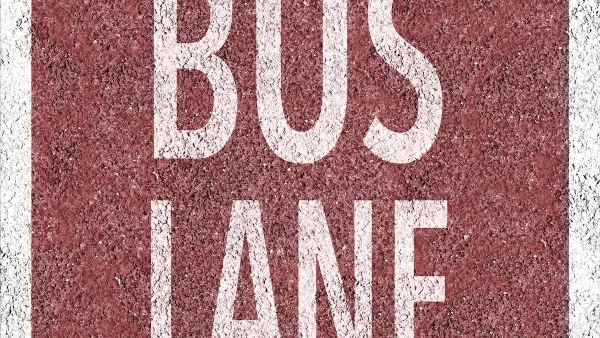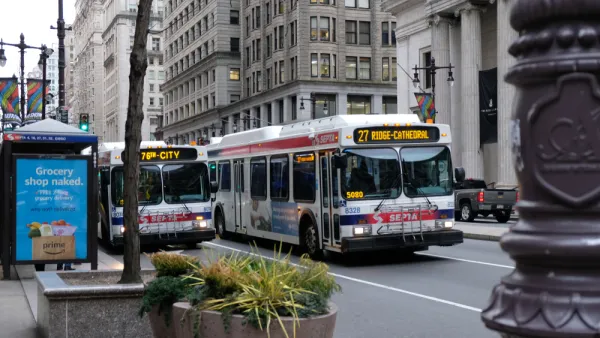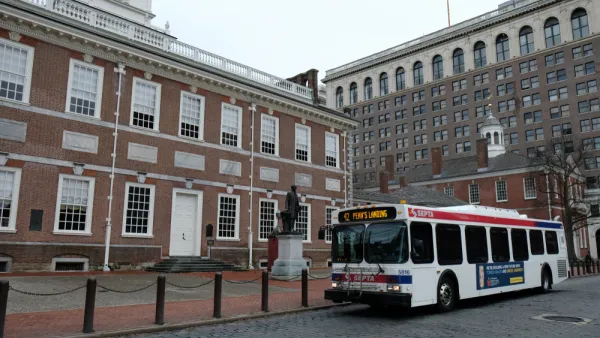The plan, which looks more than two decades into the future, seeks to modernize the city's transit system, address inequities, and improve regional connectivity.

Philadelphia officials unveiled an ambitious 24-year plan for the city's transit system that "aims to improve the system while addressing long-standing racial inequities through a redesigned bus network and Regional Rail service, modernized trolleys, and increased accessibility across the system." The plan, reports Darryl C. Murphy for WHYY, includes both current projects and "aspirational" but as-yet-unfunded ideas.
Philadelphia Deputy Managing Director for Transportation Michael Carroll said the plan "will help the city and [the Southeastern Pennsylvania Transportation Authority] compete for federal grants and align projects in a challenging post-pandemic economic landscape" while addressing the legacy of historical inequities in the city's transportation policies. "For instance, residents of color face commutes that are on average 12 minutes longer than white residents," and low-income commuters spend more on transit "because of transfer fees and connectivity challenges in neighborhoods outside of the city’s downtown core," writes Murphy. A restructured fare plan introduced by SEPTA last year seeks to address these issues and make the system more affordable.
"The plan unveiled Monday includes 30 corridors for improvements such as bus lanes, transit priority signals, and boarding islands to speed up bus service as options" and highlights the importance of Regional Rail. "This isn’t just about connecting suburban commuters downtown. More than 40% of Philadelphians work outside of the city," says City Councilmember Cherelle Parker in the article. The plan, which involved collaboration from multiple agencies and community groups, could signal a new level of regional cooperation.
FULL STORY: Faster buses, more Regional Rail, modern trolleys: Philly’s transit plan takes system to 2045

National Parks Layoffs Will Cause Communities to Lose Billions
Thousands of essential park workers were laid off this week, just before the busy spring break season.

Retro-silient?: America’s First “Eco-burb,” The Woodlands Turns 50
A master-planned community north of Houston offers lessons on green infrastructure and resilient design, but falls short of its founder’s lofty affordability and walkability goals.

Delivering for America Plan Will Downgrade Mail Service in at Least 49.5 Percent of Zip Codes
Republican and Democrat lawmakers criticize the plan for its disproportionate negative impact on rural communities.

Test News Post 1
This is a summary

Test News Headline 46
Test for the image on the front page.

Balancing Bombs and Butterflies: How the National Guard Protects a Rare Species
The National Guard at Fort Indiantown Gap uses GIS technology and land management strategies to balance military training with conservation efforts, ensuring the survival of the rare eastern regal fritillary butterfly.
Urban Design for Planners 1: Software Tools
This six-course series explores essential urban design concepts using open source software and equips planners with the tools they need to participate fully in the urban design process.
Planning for Universal Design
Learn the tools for implementing Universal Design in planning regulations.
EMC Planning Group, Inc.
Planetizen
Planetizen
Mpact (formerly Rail~Volution)
Great Falls Development Authority, Inc.
HUDs Office of Policy Development and Research
NYU Wagner Graduate School of Public Service





























